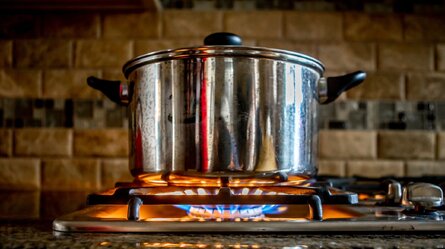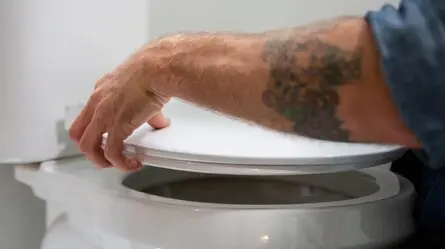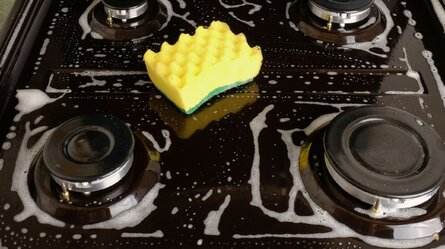Did you know that a burst flexi hose – that seemingly innocuous braided stainless steel hose under your sink – is a leading culprit behind water damage in Aussie homes? These convenient connectors, used for everything from sinks and bathroom basins to washing machines and even your hot water unit, can turn into a ticking time bomb if left unchecked. The pressure of water can cause them to burst, leading to a flood in your home.
Here’s why you should be proactive: a burst of your flexible braided hose can spew litres of water per minute, flooding your house and causing thousands of dollars in water damage claims. Imagine – a harmless-looking hose turning into a watery nightmare for your home! Don’t wait for a burst flexible braided hose to happen before you take action. Let’s discuss how to prevent this and keep your home safe from burst flexi hoses and water damage caused by water hoses.
Why Flexible Hoses Burst
Lurking beneath your kitchen sink or bathroom vanity, the seemingly innocuous flexible hose – a braided stainless steel marvel of convenience – can harbour a hidden danger. While these hoses connect your main water supply to taps, washing machines, and hot water units, a burst flexible hose can unleash a watery nightmare. Let’s explore why these handy connectors can become a silent threat to your home.
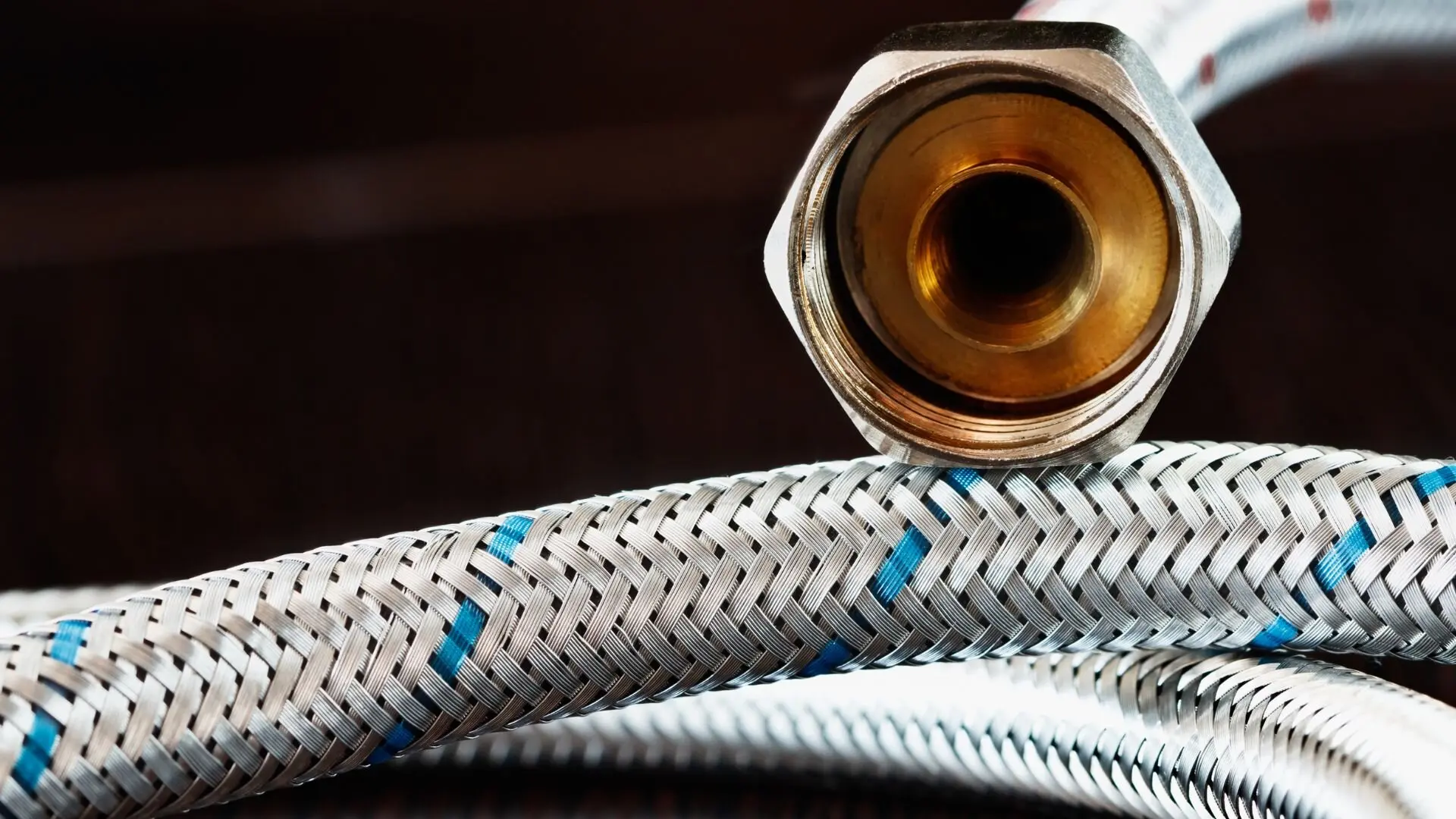
Internal issues
Over time, the rubber tube inside a flexi hose can deteriorate. This natural aging process weakens the hose, making it more susceptible to bursting under pressure. Similarly, high water pressure in your home’s main water supply can strain the hose, stressing both the rubber tube and the braided stainless steel exterior.
External threats
The way you install a flexible water hose can significantly impact its lifespan. If the hose is twisted or kinked during installation, it might develop weak spots that could burst later. Sharp objects or household chemicals kept under the sink can also damage the hose, affecting its reliability.
The flood factor
The consequences of a burst flexi hose can be devastating. Imagine – litres of water spewing out every minute, flooding your bathroom, laundry, or kitchen. This water damage can wreak havoc on your property, ruining fixtures, flooring, and even personal belongings. Repair costs can quickly soar into the thousands of dollars, leaving you facing a hefty financial blow on top of the inconvenience.
Taking control
Fortunately, you can take proactive steps to prevent a burst flexi hose from turning your home into a watery mess. Regularly inspecting your flexi hoses for signs of wear and tear is key. Look for cracks, leaks, or bulging in the rubber, and replace any hoses that show these warning signs. Consider installing a whisper flood stop valve on your water supply lines. These handy devices automatically shut off the main water supply in case of a burst, minimising potential damage.
Remember, prevention is always better than cure. By watching your flexible braided hoses and ensuring proper installation by a professional plumber, you can significantly reduce the likelihood of a burst hose and protect your home from a potential flood.
Preventative Measures to Ensure Long Hose Life
Flexible braided hoses, often called your flexi hoses for convenience, offer easy connections for taps, washing machines, and hot water units in your home. But if neglected, these seemingly harmless hoses can turn into burst flexible hoses, leading to water damage to your home. Here’s how you can take charge and ensure your Flexihose has a long and leak-free life.
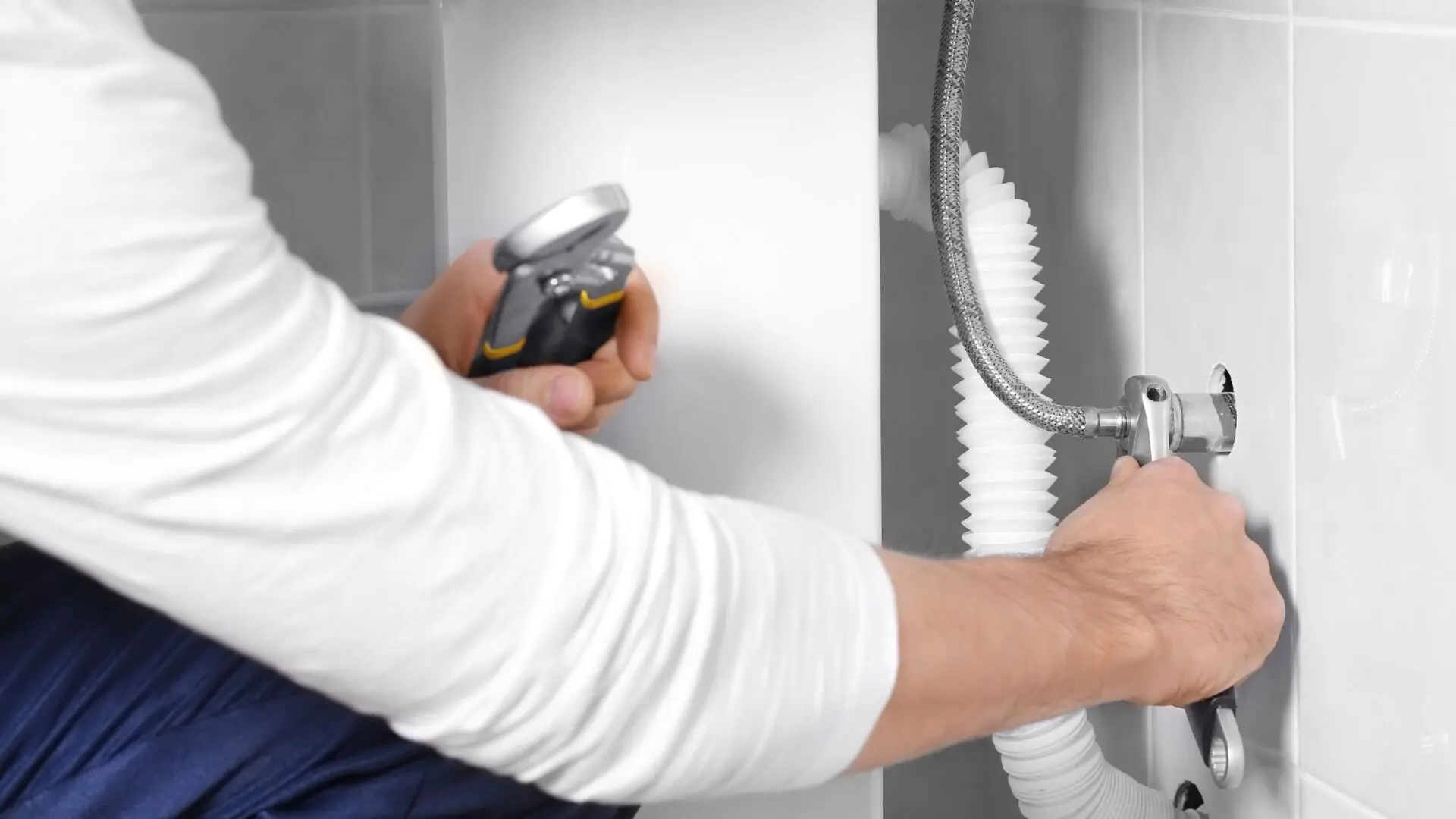
Invest in Quality
Not all hoses are created equal. Look for WaterMark-certified hoses – these meet Australian standards for quality and durability. When it comes to materials, stainless steel braiding makes a big difference. Flexi hoses with braided metal construction are superior to rubber hoses. This braided stainless steel braiding offers exceptional strength and resists wear and tear that can lead to cracks and leaks over time.
Installation Matters
Proper installation is crucial for the longevity of your flexi hoses. Consider enlisting a licensed plumber for the job. Their expertise ensures the hoses are correctly fitted and avoid over-tightening, which can damage the internal components. Equally important is ensuring the hoses aren’t kinked or twisted during installation. Kinks restrict water flow and create weak points that are more susceptible to bursting.
Regular Inspections: Be Proactive
Become familiar with your flexi hoses and make a habit of visually inspecting them every few months. Look for any signs of wear and tear, such as cracks, bulges, or leaks. Run your fingers along the hose to feel for any weak spots or areas that feel soft or spongy. For braided metal hoses, keep an eye out for any signs of rust or corrosion on the metal exterior. Early detection is key – a small leak now is much easier and cheaper to deal with than a burst hose later.
Temperature Matters: Protect from Extremes
Extreme temperatures can really affect your flexible water hoses. Try not to run hot water through them for too long, as the heat can weaken the rubber inside. If you live in a place where it freezes, consider wrapping your hoses with insulation to prevent cracking.
Pressure Relief: Safeguard Against High Pressure
High water pressure is another culprit behind burst hoses. If you suspect your home’s water pressure might be above average, consider installing a pressure-limiting valve. These valves regulate incoming water pressure, preventing it from exceeding a safe limit and potentially causing a burst hose. Consulting a licensed plumber is recommended to determine if a pressure-limiting valve is necessary for your plumbing system.
Peace of Mind: Isolation Taps for Quick Shutoff
Picture finding a leak in your washing machine hose. Rather than rushing to shut off your whole house’s water supply, wouldn’t it be simpler to just stop the water to the washing machine? Isolation taps connected to your flexi hoses do just that. They let you cut off water supply to a specific hose if there’s a leak, minimising any water damage. This can be a real lifesaver, especially for hoses linked to appliances like washing machines or dishwashers.
By following these simple yet effective preventative measures, you can significantly extend the lifespan of your flexi hoses and safeguard your home from the potential disaster of a burst hose. Remember, a little vigilance ensures your plumbing system runs smoothly, and your home insurance doesn’t get burdened with unexpected damage insurance claims.
What to Do in Case of a Burst Flexi Hose
Experiencing a burst flexi hose at home can be quite alarming. Here’s how to keep calm and reduce the damage:
Stay calm and move quickly. A burst flexi hose can release a lot of water in just a minute, so every second counts.
Turn off the water supply right away. Use any flood stop valves, and isolate the hose. If not, find your home’s main water valve and shut it off completely.
Contain the spillage. Grab towels or buckets and place them under the burst hose to collect leaking water. This will help prevent the water from spreading and causing further damage to your home.
Call a licensed plumber. Don’t attempt to fix the burst hose yourself. A licensed plumber can assess the situation, replace the damaged flexible braided hose, and ensure your plumbing system is functioning safely.
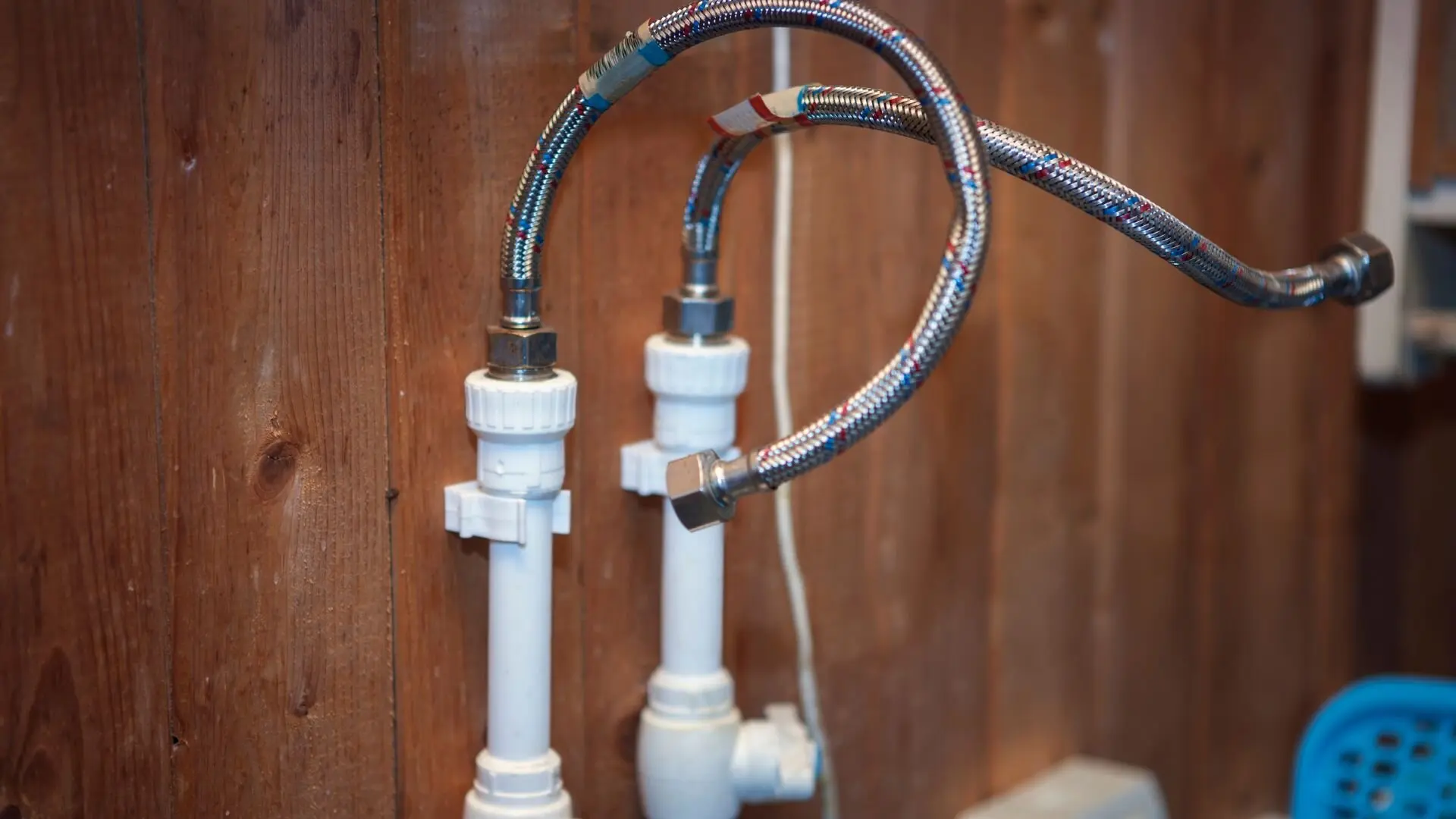
Here are some top tips for flexible braided hoses installed in your home:
- Check your Flexi hoses regularly for signs of wear and tear, such as cracks, bulges, or rust.
- The likelihood of a burst flexi hose increases with age. Consider replacing your hoses every five to ten years, even if they appear undamaged.
- Plumbers recommend installing isolating flood stop valves on the lines that supply water to your kitchen sinks, bathroom fixtures, and other appliances connected by flexi hoses. This lets you quickly shut off the water supply to a specific fixture in case of a leak or burst.
Taking control of the situation quickly and following these steps can prevent a burst flexi hose from turning into a major disaster. Remember, even a small leak can lead to significant water damage if left unchecked. Don’t hesitate to call a professional for help – their expertise can save you time, money, and a lot of stress.
Flexi Hose Heroes. Preventative Care, One Hose at a Time
Don’t let a burst flexible hose turn your home into a watery nightmare. These seemingly harmless connectors can unleash gallons of water in minutes, causing extensive damage and hefty repair bills.
Taking preventative measures is crucial. Regularly inspect your flexi hoses for signs of wear and tear. Consider installing isolation taps to shut off the water supply to individual hoses in case of a leak. Pressure-limiting valves can also safeguard your plumbing from high water pressure, a common cause of burst hoses.
Woolf Plumbing offers expert advice on flexible hoses, pressure-limiting valves, and isolation taps. We can also help with burst pipe emergencies. Don’t wait for a disaster— contact Woolf Plumbing today to ensure your home’s plumbing is safe and sound.


